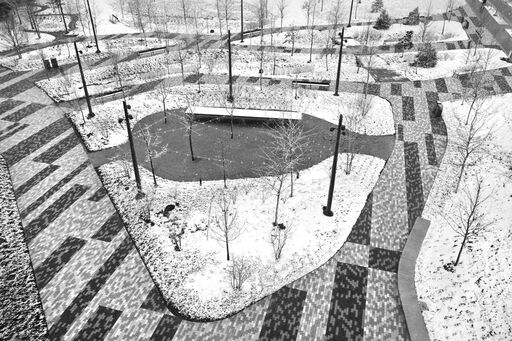
Design Inspirations
As we look ahead to 2021, we’re finding inspiration in some bright spots from 2020. Here are two illuminating moments from last year that are helping to guide us toward a resilient and inclusive year ahead.
Renewed Commitment to Our Mission
Last fall, David Rubin was invited to participate in a “STUDIOS Salons: Conversations on our Rapidly Changing Landscapes” to celebrate the 35th anniversary of our long-time collaborator, STUDIOS Architecture (visit our legacy of collaboration at Canal Park, KIPP:DC Charter High School, and Franklin Park in Washington, D.C., among other projects from UC Berkeley to Versailles, France). It was a thought-provoking, virtual interview recorded from our Philadelphia studio, undertaken around the time of the presidential elections.
David spoke about equity and identity in landscape architecture, particularly in this moment of multiple crises, including COVID and civil unrest. You can watch the full STUDIOS anniversary video “The Future of Open Space” here which includes STUDIOS’ long support of The Tree Restoration Project, among others, or watch David’s interview clip here. Below are a few excerpts from his talk:
“We have the capacity to define ourselves as a society through design, through the representation of those places and spaces, and in doing so, we have the capacity to reflect our culture…”
“Our aspiration is humanist in origin, to ensure that all feel welcome, and in that welcomeness of the designed place, we strive to ensure that comfort and the capacity to communicate are at the fore.”
“We have to be purposeful in not only defining environments that are safe, but defining environments that still allow people to be able to see themselves. Everyone should feel welcome. Everyone should have the capacity to see themselves present. To the exclusion of no one. So that everybody sees the opportunity to converse, everybody sees the likenesses as well as the nuances that make us different. That’s an extraordinary opportunity, particularly as we face the world as we know it in the present day.”
Technology for Creative Problem-Solving

Our studio has some extraordinary talent. Henry Moll has been helping us all be better designers through the creative use of technology. Henry and Land Collective’s work in parametric modeling was the subject of the article, “The Scripted Surface,” in the November 2020 issue of Landscape Architect Magazine. Author Jessica Canfield spoke with David and Henry to understand how digital modeling was utilized to design and build a better paving solution at the Cummins DBU (Distribution Business Unit Headquarters) plaza in Indianapolis.
Henry designed a script using the parametric software Grasshopper that helped efficiently test different options for the continuous two-toned concrete paver system at Cummins DBU. However, Henry took the software a step further to assist the construction team by developing guidelines to install the pattern on site without having to detail the exact distribution of colored pavers, while also remaining true to the design intent. As Henry notes:
“We are continuing on an exciting path, where both the spectrum of tools in landscape technology is expanding, and also their boundaries between each other are blurring. This is an evolution in forward-thinking uses of modeling software, for example, beyond the visualization of an intent and into aiding the designer in making that intent a reality.”
For Henry, digital modeling is helping to transform the entire process from design to construction:
“At Land Collective, with code writing, rapid prototyping, and assembly instruction, we are applying this innovation in each aspect of our project work. My aspiration is that this continues in our field, ultimately, creating built work that is as rich as our ideas.”
We are building upon our research, Henry’s research, and successful implementations in our current project under construction, Franklin Park. In the future southern plaza in an area surrounded by stormwater catchments, the paving pattern is designed to reflect water movement over solid surface. The patterning implies a cascade of sheeting water across the plaza surface.
